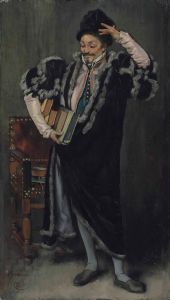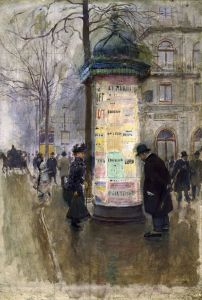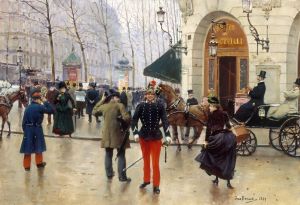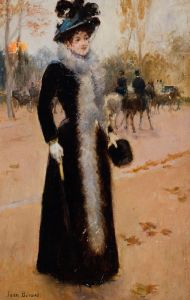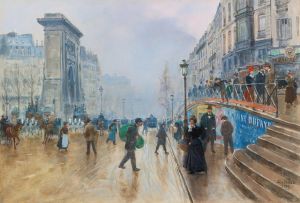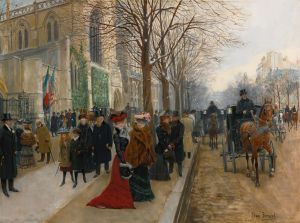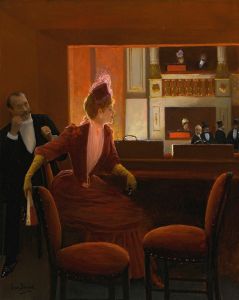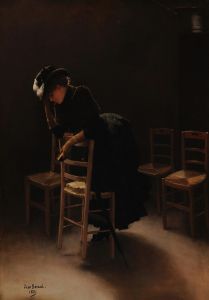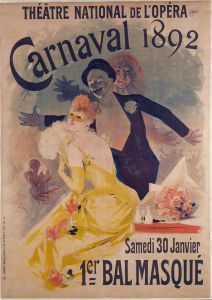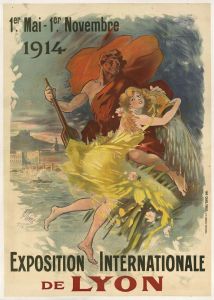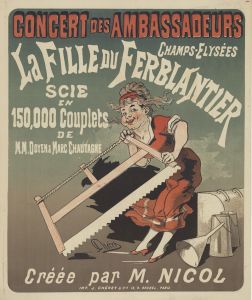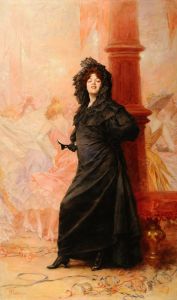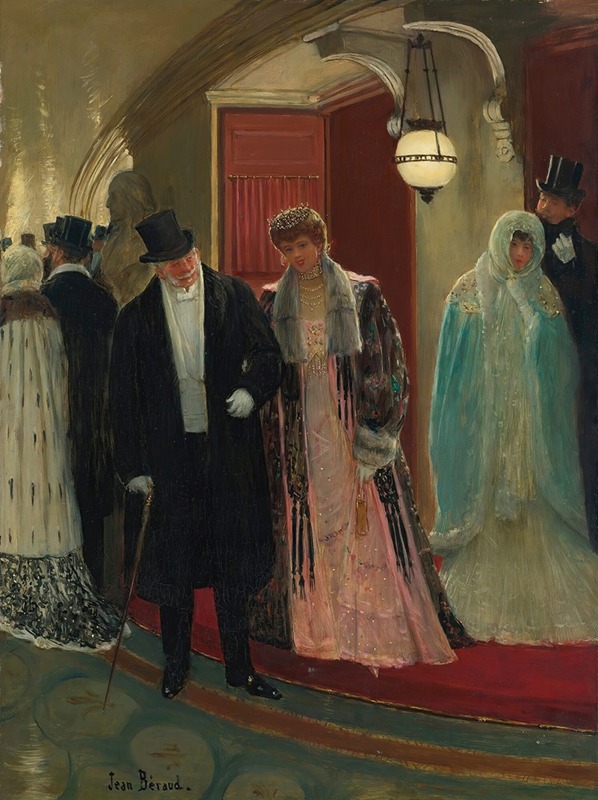
Exit From The Loge Of The Opera
A hand-painted replica of Jean Béraud’s masterpiece Exit From The Loge Of The Opera, meticulously crafted by professional artists to capture the true essence of the original. Each piece is created with museum-quality canvas and rare mineral pigments, carefully painted by experienced artists with delicate brushstrokes and rich, layered colors to perfectly recreate the texture of the original artwork. Unlike machine-printed reproductions, this hand-painted version brings the painting to life, infused with the artist’s emotions and skill in every stroke. Whether for personal collection or home decoration, it instantly elevates the artistic atmosphere of any space.
Jean Béraud (1849–1935) was a French painter known for his depictions of Parisian life during the Belle Époque. His works often captured the elegance, charm, and social dynamics of the city, portraying scenes from cafés, streets, and theaters with meticulous detail and a sense of realism. One of his notable works, Exit from the Loge of the Opera, exemplifies his ability to document the cultural and social atmosphere of late 19th-century Paris.
Exit from the Loge of the Opera is an oil painting that illustrates a moment in the life of Parisian high society. The scene depicts a woman leaving a theater box, or "loge," at the opera. She is dressed in an elegant evening gown, complete with accessories that reflect the fashion of the time. The composition highlights her poised demeanor and the luxurious environment of the opera house, a central hub for social gatherings and cultural events during the Belle Époque. Béraud's attention to detail is evident in the rendering of the woman's attire, the textures of the fabrics, and the architectural elements of the opera house.
The painting is characteristic of Béraud's style, which blends elements of realism and impressionism. His works often include subtle narratives, offering viewers a glimpse into the lives and interactions of his subjects. In this piece, the focus on the woman suggests themes of elegance, sophistication, and the performative nature of public appearances in Parisian society. The opera, as a setting, was not only a place for musical performances but also a stage for social display, making it a fitting subject for Béraud's exploration of urban life.
Jean Béraud's works are celebrated for their historical and cultural significance, as they provide a visual record of Paris during a transformative period in its history. Exit from the Loge of the Opera is a testament to his skill as an observer and chronicler of his time, capturing both the grandeur and the nuances of the city's social fabric. The painting is housed in a private collection, and its exact provenance and exhibition history are not widely documented.
Béraud's legacy endures through his contributions to the art world, particularly his ability to immortalize the spirit of Paris during the Belle Époque. His works continue to be studied and appreciated for their artistic merit and their role in preserving the cultural history of 19th-century France.





